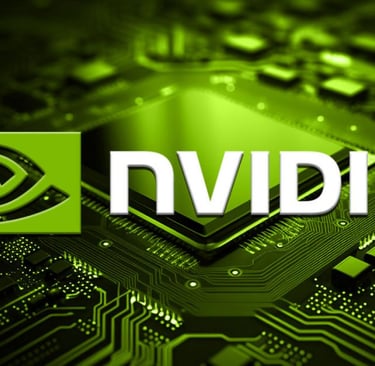NVIDIA's Project GR00T Revolutionizes Humanoid Robotics: Empowering Machines with Advanced Learning Capabilities
Discover how NVIDIA's Project GR00T is setting a new standard in humanoid robotics, enabling robots to learn from minimal human demonstrations. This breakthrough AI model promises to enhance efficiency, safety, and versatility across various industries. Read more about the future of intelligent robots.
Faheem Hassan
3/20/20242 min read


NVIDIA Unveils Project GR00T: A Leap Forward in Humanoid Robot Intelligence
In a groundbreaking announcement at the GTC conference, NVIDIA has unveiled Project GR00T, a pioneering AI foundation model set to redefine the capabilities of humanoid robots. This innovative project, symbolizing Generalist Robot 00 Technology, is poised to empower robots with unprecedented levels of learning, coordination, and dexterity. Here's a closer look at how Project GR00T is shaping the future of robotics and what it means for industries worldwide.
The Genesis of Project GR00T
Project GR00T stands at the forefront of NVIDIA's ambitious vision to bridge the gap between artificial intelligence and robotic functionality. By serving as the cognitive core or "mind" of humanoid robots, GR00T enables these machines to assimilate and execute complex tasks with ease. The essence of this technology lies in its ability to learn from minimal human demonstrations, a feature that promises to accelerate the deployment and versatility of robots across various sectors.
How Does GR00T Work?
At the heart of Project GR00T is its unique learning mechanism, which processes multimodal instructions and past interactions to guide robots' actions. This advanced model allows robots to understand and perform tasks by observing just a handful of demonstrations, significantly reducing the time and resources required for robot training. NVIDIA's approach not only enhances the efficiency of robot learning but also opens new avenues for robots to assist in complex and nuanced tasks.
Collaborations That Shape the Future
NVIDIA's venture into humanoid robotics is not a solitary journey. The tech giant has joined forces with leading names in the robotics industry, including Boston Dynamics, 1X Technologies, Agility Robotics, Apptronik, and Figure AI. These collaborations are instrumental in integrating GR00T's capabilities with existing and future robotic platforms, ensuring that the benefits of this technology are realized across a broad spectrum of applications.
The Impact of Project GR00T
The implications of NVIDIA's Project GR00T are vast and varied. By empowering robots with the ability to learn quickly and adapt to diverse tasks, NVIDIA is paving the way for more intelligent machines that can undertake dangerous, tedious, or highly specialized jobs. From manufacturing and logistics to healthcare and disaster response, the potential applications of GR00T-equipped robots are limitless. This leap in robotic intelligence could significantly enhance productivity, safety, and efficiency in numerous fields, marking a new era in human-robot collaboration.
Looking Ahead
As Project GR00T progresses, the anticipation around its potential grows. NVIDIA's commitment to advancing AI and robotics technology signals a future where humanoid robots could become an integral part of everyday life, assisting with a wide range of tasks and improving the quality of human life in unprecedented ways. With NVIDIA's track record of innovation, Project GR00T is set to be a cornerstone in the evolution of robots, making them more accessible, capable, and versatile than ever before.
In conclusion, NVIDIA's unveiling of Project GR00T at the GTC conference marks a significant milestone in the field of robotics. By harnessing the power of AI to teach robots how to learn from human behavior, NVIDIA is not just redefining the boundaries of technology but also how we envision the future of human-robot interaction. As Project GR00T moves from concept to reality, the possibilities for what robots can achieve are set to expand dramatically, heralding a new age of robotic intelligence and capability.
